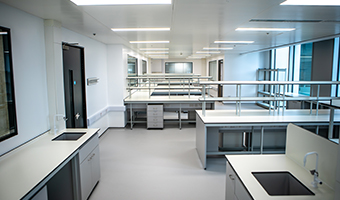The launch of Heathrow T5 hit the headlines for all of the wrong reasons: delays, disruption and disappointment.
But now that the dust has settled and the terminal is flying, what impact is the world’s busiest airport having on Thames Valley office space?
1986 saw the completion of Terminal 4, marking a significant change in Heathrow’s corporate landscape. Prior to its construction, the east side of the airport was an industrial heartland and Heathrow’s office demand was catered for by pockets of buildings interspersed with hotel developments along the Bath Road. Following Terminal 4’s completion, Stockley Park, Bedfont Lakes and Dukes Green were developed and subsequently changed the shape and emphasis of the office market.
Heathrow office rents doubled on completion of Terminal 4
The impact that Terminal 4 had on office rents was not surprising. Office rents in Heathrow virtually doubled from £17.50 per sq ft in the early 1990s to £35 per sq ft in 2001. Clearly the commercial property market matured as Terminal 4 encouraged a sharp increase in passenger numbers, consequently demonstrating a link between footfall increase and average office rental growth.
Terminal 5: will history repeat itself?
Despite its turbulent start, T5 is now off the ground and, in the words of British Airways, “is now working”. In the midst of a challenging global economy BAA saw passenger numbers at its London airports fall by 14.6% in Q1 2009, although Heathrow proved to be more resilient than Gatwick and Stansted with a drop of just 7.6%. This is, in part, due to Heathrow’s greater share of long-haul markets, the later Easter and a colder winter.
Air transport’s effect on economic growth
The relationship between air transport and economic growth is demonstrated by the fact that when air traffic slows, it is followed by a fall in economic growth. Conversely, increases in passenger growth precede rises in rates of economic growth.
Furthermore, there appears to be a statistical correlation between passenger numbers through Heathrow and the growth in Thames Valley rents. Key factors driving passenger growth in the medium term include growth in world trade, growth in financial and business service sectors, and the globalisation of business. For instance, larger pharmaceutical companies tend to operate on an increasingly global scale and it is significant, therefore, that 15 of the largest such businesses in the UK are based in the Thames Valley region. The proximity to Heathrow is one of the key drivers for their business locations, allowing accessible international travel.
Terminal 5 passenger numbers to exceed 90m each year
According to CAA, passenger numbers at Heathrow in 2008 were approximately 67 million. Terminal 5 will allow passenger numbers in excess of 90 million a year once it reaches maturity. Growth in passenger numbers is a lead indicator to the economy, and hence rental growth, but Terminal 5 has changed the capacity of Heathrow beyond all recognition.
Estimates from the Department of Transport suggest that the number of passengers through London’s airports will double by 2030. That is an average annual increase of over 4%. Business travel is predicted to grow at an even greater rate, which may well be significant for Heathrow.
Transport improvements
When you consider the vast improvements to transport networks in the area over the last few years, it is not surprising that Heathrow’s office market ‘catchment area’ is now far bigger than it was in 1986, broadening options and opportunities for developers and occupiers alike.
Improvements to road and rail infrastructure include the widening of the M25, extension of the Heathrow Express link from Paddington, and the Piccadilly Line’s extension into T5, all of which have expanded what once was a ‘Heathrow market’ to a wider Thames Valley region. Staines and Slough, which are the closest HQ office locations to the south of the spurs, and Uxbridge to the north, are now just as accessible to the airport as the existing business parks around Heathrow.
Third runway critical to passenger number growth
Heathrow’s passenger numbers can only really be grown by the introduction of the third runway. If a third runway is introduced, the increased passenger volume will demand significant parallel transport/accessibility improvements. In the interim a new generation of higher capacity aircraft, such as the A380, are being introduced.
The proposals for improving Heathrow’s access will see it become the first stop on an extended high speed rail network that currently terminates at Kings Cross St Pancras. This would provide the airport with a direct link to Europe and create a new high speed rail station at Heathrow. This will enable the airport to be made more accessible to the West, South West, Wales and perhaps most significantly the Midlands and North.
Transport infrastucture development will be key
It is difficult to see how the third runway can be implemented without these major rail infrastructure changes to reduce the amount of car-linked passengers. In time, all of these changes will prove as significant to the Thames Valley as the construction of the M4 in the 1960s.
REGISTER FOR UPDATES
Get the latest insight, event invites and commercial properties by email







